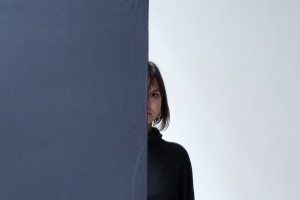We are traversing some interesting times in which even the confabulatory acumens of science or fiction cannot keep up with the wondrous effects machines employ towards modulating our sense of reality. The political, social and aesthetic regimes they install superseded our ways of thinking about them. They impair the power we need to muster in order to reorient machines from their co-option from capital towards less compromised ideals. It is as if we are under a permanent state of anaesthesia, spellbound by either awe or horror. Even worse, sometimes our fascination with what we perceive as utterly complex, inventive tech witcheries makes us casually skip the fact that they are also being part or instruments for the further dissemination of inequality and exploitation. Bias and prejudice make their way even there, in the apparently neutral and unpeturberd sequences of code. Benjamin Bratton pointed to this fact, that we submit rather shamelessly to a fantasy of permanent innovation and unlimited intelligence “with prejudice toward disenchantment and without deference for superstition and sentimentality. Other alternatives suggest instead worlds of shit and pain” (The Stack, MIT Press, 2015). An equally escapist faith could be traced down in the way we expect art to behave around our deeply technological times. And, at times, we might feel let down by the fact that theorists and artists alike often chose to paint a rather disheartening picture for our future around machines: “In the muck of symbolic interchangeability (art into money into toy into energy into symbol into .JPG into art into money), the building project needing donors is a new structure that can give rhythm and shape to the global noise. Its gambit embarks headlong into the banality of the universal so as to find the coordinates of eclipse, and the recognition that the end of this world does not mean the end of worlds, but rather of us, which may be our only means of survival. Humans: we come and go.” (Idem)
But why would such conversation be opened here, in Bucharest? After all, Bucharest is not known, at this precise moment of speaking, for being one of those digitally shaped hyperbolic geographies proper to London, Shenzhen or San Francisco? This is not a space laden with promiscuous layers of tech-magic although one is yet to measure how powerful and deep the influence of algorithm-driven decisions from the aforementioned mega centres goes on peripheral spaces like Eastern Europe or the rest of the world which is not a ‘first’. As art practitioners based here in Romania, and profiting loads from the digital divide, we tried to bridge, for the purpose of knowing, how these remote geographies interact. We are delighted to feature some of the most interesting Romanian artists that engage with the topic of technology, while also opening up and paying attention to the international context.
Georgiana Cojocaru
Coordinator of the issue
POSTED BY
Cristina Bogdan
Founder and editor-in-chief, between 2014-19, of the online edition of Revista ARTA. Co-founder of East Art Mags, a network of contemporary art magazines from eastern and Central Europe. Runs ODD, a s...
www.evenweb.org

